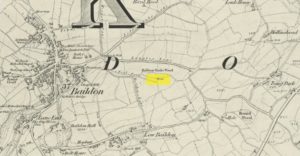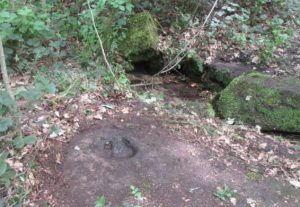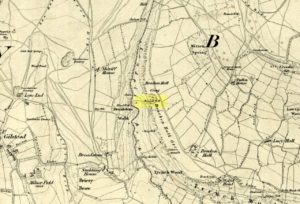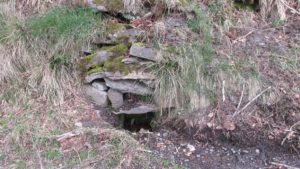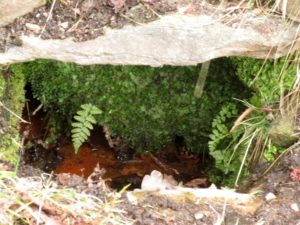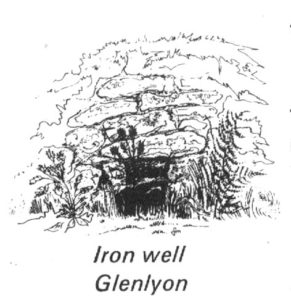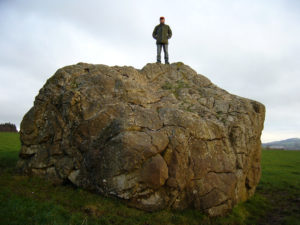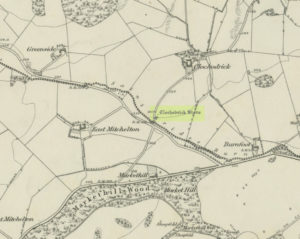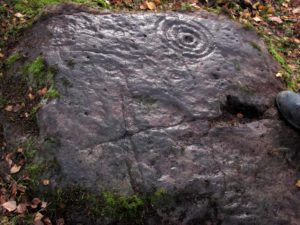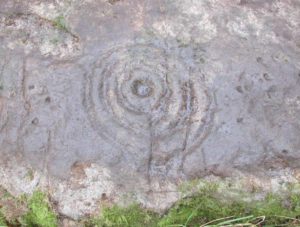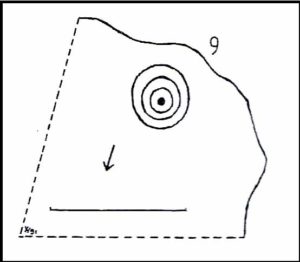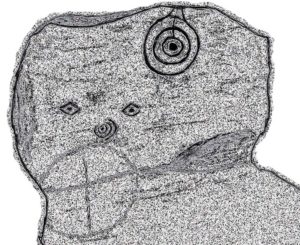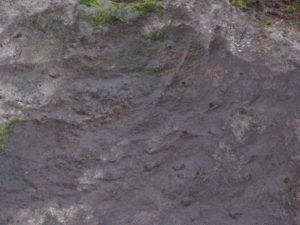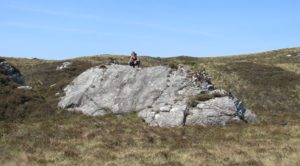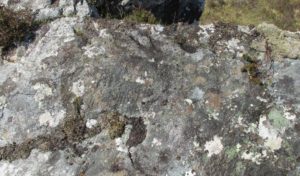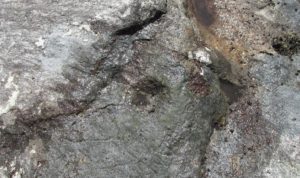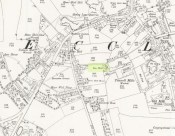Cup-and-Ring Stone: OS Grid Reference – SE 15942 40187
Archaeology & History
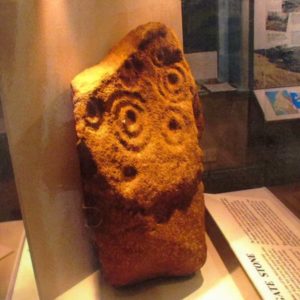
This excellent cup-and-ring marked petroglyph was found fortuitously in September 2001 by the land-owner at Near Hey Gate field to the northeast of Baildon village. He was clearing out remains of some old walling in the field and, adjacent, a rock that was protruding out of the ground got turned over. Underneath it he noticed a series of very well-preserved cups and rings in a cluster near one part of the rock. It was a bittova beauty to be honest!
Thankfully due to the subsequent efforts of local rock art students Mike Short and Keith Boughey, it was later re-housed in the Brackenhall Centre at the edge of Shipley Glen.
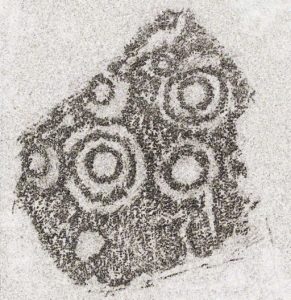
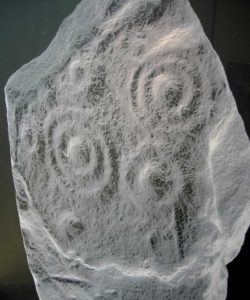
The stone itself was once larger than it now is and may have had additional carved elements on it, but the other portion that had broken off wasn’t located when it was first dug out of the ground. This may mean that it was moved here from another location, which would have been somewhere close by. Many other petroglyphs exist in and around the Baildon district.As we can see in the images here, two very well-defined double cup-and rings have clusters of smaller singular cup-and-rings around their edges. A single cup-mark was etched below the largest of the double-ring carving, and what seems like a carved straight line emerges from the largest of the single cup-and-ring.
References:
- Griffiths, Kathie, “Historic Stone Back Home on Moors,” in Telegraph & Argus, 11 November, 2006.
- Short, Mike, “The Heygate Stone,” on Megalithic Portal, 21 November, 2006.
Acknowledgements: Big thanks to Mike Short for his info and to Keith Boughey whose rubbing I’ve touched-up and used in the site profile.
© Paul Bennett, The Northern Antiquarian
The map could not be loaded. Please contact the site owner.
